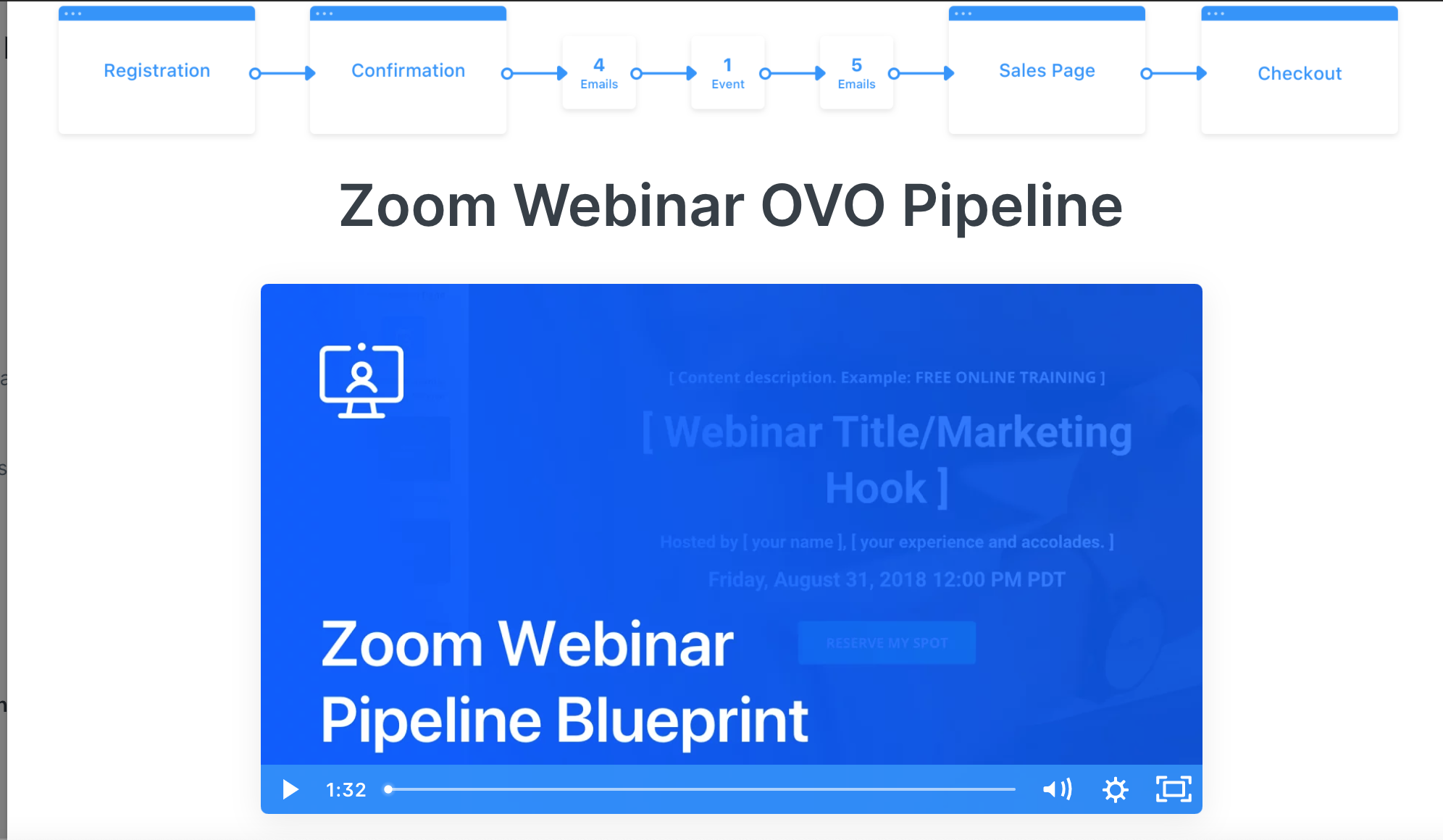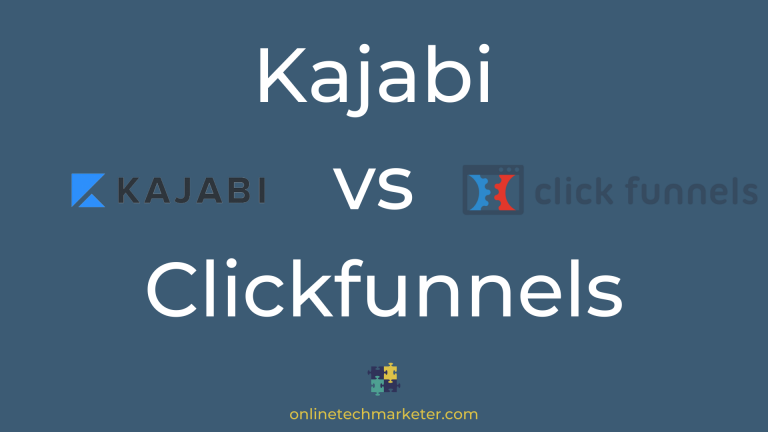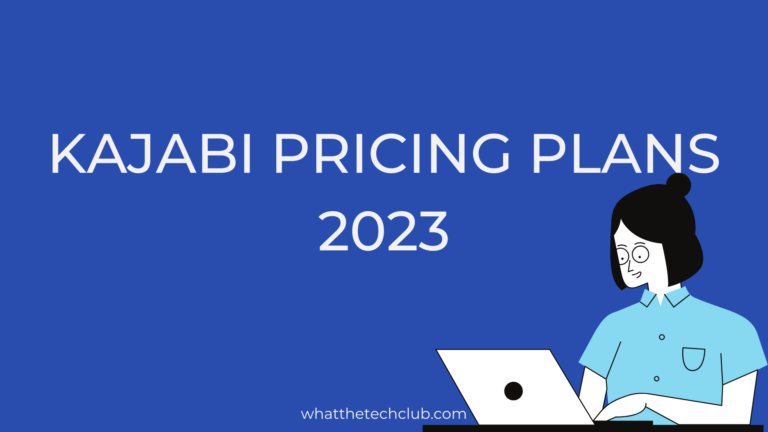Kajabi vs Thinkific: Which platform should you choose?
Kajabi vs Thinkific for online course creation.
This post may contain affiliate links. Please read the disclaimer.
2021 has led to a lot of people turning to online classes as a way of improving their skills or gaining knowledge so as to get a new job.
Kajabi and Thinkific are two platforms that are among the top on the list of anyone who plans to start selling e-courses or anyone who wants to acquire knowledge to improve themselves.
But the question is, which one of these platforms is suitable and perfect for what you try to sell?
You’ve probably been doing a lot of research on the several course creation platforms available today, and you might be feeling overwhlemed with all the choices that are available.
In this blog post, we will be looking at the pros and cons, core features, and pricing of Kajabi vs Thinkific.
Let’s look deeper into each of these platforms so you can decide which is best for your business.
What are Kajabi and Thinkific?
First off, Kajabi and Thinkific are both renowned platforms that are mainly focused on helping people set up, publish, and sell their courses online.
They are both cloud-based platforms, meaning you can upload all your course videos, quizzes, pdfs, and course content in an online location and keep it for future reference.
Unlike Udemy, these platforms provide great flexibility and allow tutors to gain control over the prices for their online courses without setting limits.
They both offer entrepreneurs the opportunity to set their course policies, data management, and prices without placing any barriers.
Additionally, they both have a non-complex and super-easy design layout on their websites that even a dummy can be able to sign up and get the ball rolling with their courses.
There are, however, major differences between these two.
While Thinkific is deliberately constructed with a focus on the core features, Kajabi is an all-in-one tool that houses everything you need to set up an e-course business.
Thinkific presently accounts for over 36,000-course creators and sells e-courses to over 10 million students around the world.
Kajabi on the other hand has over 25,000 business and have great success stories in their portfolio.
With this in mind, let’s let talk about the course creation segments.
1. Course creation
Creating an engaging and conducive atmosphere for your audience is one vital key to the success of your online course business.
You want to be perceived as a professional so your audience won’t have an iota of doubt towards you.
Let’s take a look at how these platforms provides course creators with this experience under the following sub-heading:
- Support system for newbies: Kajabi provides startups with a 28-days support program that allows you to see for yourself what course creation is all about. This challenge is aimed at helping you prune and nurture your ideas so you can create your first course. Thinkific on the other hand doesn’t have anything similar to this.
- Payment processor: These two platforms both use a built-in payment processor which is either through Stripe or Paypal. In terms of currency, Kajabi supports the usage of multiple currencies across the globe. However, Thinkific doesn’t have a multi-currency option yet.
- Premade course templates: Both Kijabi and Thinkific has pre-made course templates that help you get started with creating or launching a course.
For instance, Kajabi offers you a product blueprint that will be used to create a sample structure for your e-products. You can also choose to work with a blank canvas on the two platforms if you prefer starting from scratch.
Nonetheless, Thinkific will only allow you to add two levels of your course, majorly the Lessons and Chapters, and will not allow an option for a third level as it is with Kajabi.
- Course player: The course player is an important feature to any online course platform and it’s where the students get engaged with your content as a tutor.
Kajabi allows users to choose from a library of 10+ course player themes so you can choose the one that perfectly communicates your message.
They have the best designs you can think of. For instance, the kajabi’s premiere theme is one of those awesome course player design you can find on the planet.
The aesthetic of it gives a highly professional feel and they are perfectly designed so users could enjoy the lessons and modules.
Thinkific on the other hand haven’t done great work with their course player designs.
Most of their designs are not really attractive to keep the students engaged.
However, over the years they’ve made a lot of improvements to the design.
The challenge is, they only have a single theme for all their course player design which may not work well for all purposes.
2. Sales and Marketing tools
After setting up a course online, it isn’t time to focus on your marketing. You will need to create a perfect marketing plan with several marketing tools to keep up with your business and get more students to sign up.
Let’s examine how these platforms assist entrepreneurs with marketing tools:
- Marketing tools: Thinkific only provides you a platform to set up your online business. You’ll need to sign up for different platforms to be able to carry out services such as email marketing or setting up a landing page. This makes the work more difficult from your end.
Kajabi on the other hand has all-in-one tools that can help you grow and build your prospects through email marketing and the pages feature. You don’t need to run around signing up for other services.
- Course pricing feature: as part of the marketing feature on most course platforms the ability to process payments and other marketing tools easily is very essential.
Both Kajabi and Thinkific offer a lot of flexibility in their course pricing and allows users to make the best decisions based on their convenience.
You can come up with a payment plan that works best for you such as charging a one-time fee or charging based on subscription, you can even go as far as offering a free trial or charging custom payments.
The difference, however, lies in the fact that Kajabi allows you to set up a weekly subscription plan which is currently not allowable on Thinkific.
More so, Kajabi has an automation tool that allows you to add a “Gift This Course” pricing option which is currently not possible on Thinkific.
3. Landing pages and sales pipeline
How do you build an ever-dedicated audience without having an email list?
How do you get new people to sign up for your courses if you don’t have a system that allows people to opt-in with their emails, purchase your products, or probably download your lead magnets?
A landing page is an essential component to anyone who plans to succeed in the business of training students online. They make it easier to generate better conversions for your business.
Unlike many other e-course platforms, Kajabi has dozens of intensely captivating landing pages that you can use to capture new leads so you can always get their email address in exchange for lead magnets.

Along with these landing pages they have:
- Squeeze pages
- Thank you pages
- Homepages
- Sales pages
- Download page
One of my favorite influencers, Brendon Burchard uses Kajabi for their courses.
Kajabi also possesses what is regarded as “Sales Pipeline Builder”. With this feature, you can create and automate your marketing funnels while also running your marketing campaigns effortlessly.
Additionally, Kajabi can help you set up webinars by selecting the ” Zoom Webinar” blueprint, and automatically it creates a registration and confirmation page for tracking your registrants.

As at the time of writing, Thinkific has nothing of such, you will need a third party online software such as Clickfunnels and Leadpages to do this for you.
You can also check out our Kajabi vs Clickfunnels comparison blog post.
4. Kajabi vs Thinkific Pricing
Now let’s look at the pricing for these platforms.
Kajabi pricing
Kajabi has a quite expensive pricing plan but this is solely based on the value they are bringing to the table.
The platform offers a 20% discount on their annual plans.
Presently, they have three pricing tiers which includes:
- The Basic Plan – costs $119 per month (to be paid annually)
- The Growth Plan – costs $159 per month (to be paid annually)
- The Pro Plan – costs $319 per month (to be paid annually) plus you’ll receive everything in the Growth and Basic plan
These plans seem expensive but when you focus on the value you are getting on each plan, you will agree with me that the price is worth it.
Thinkific Pricing
Thinkific offers an advantage for beginner course creators in that they have a free plan available. Having said that, you should remember that thinkific does not offer the email marketing and funnel builder feature. This means you will need to use others tools for those features, which might end up costing you the same.
They have 5 packages that you can select from, so you can choose the ones that are perfect for your budget and timing.

The packages include:
- The Free Plan: $0
- The Basic Plan: For $39 per month (paid annually)
- The Pro Plan – $79 per month (paid annually).
- The Premier Plan -$399 per month (you’ll enjoy all the Pro plan features)
- Unlimited Growth Package – $499 per month (exclusively for Pro plan users)
Our Recommendation : Kajabi vs Thinkific
Now you might be asking yourself – which platform is best for me?
We wouldn’t supply with a simple “Yes” or “No”. Rather we want to have you look into your goals more specifically.
Answering these questions can drive you towards a better decision
- Who are your target customers?
- Do you want an all-in-one platform or you want to optimize your costs?
- What is your budget like?
- Which course(s) do you plan to sell?
For instance, if you want a platform that houses all the tools needed to create your entire online course business, then Kajabi should be your go-to.
On the other hand, if you’re looking for a low-cost platform where you can do the heavy lifting all by yourself, Thinkific is best for you.
You might also want to read the blog post on Teachable vs Thinkific.
Which platform do you think will work the best for you?
Let us know in the comments below.



